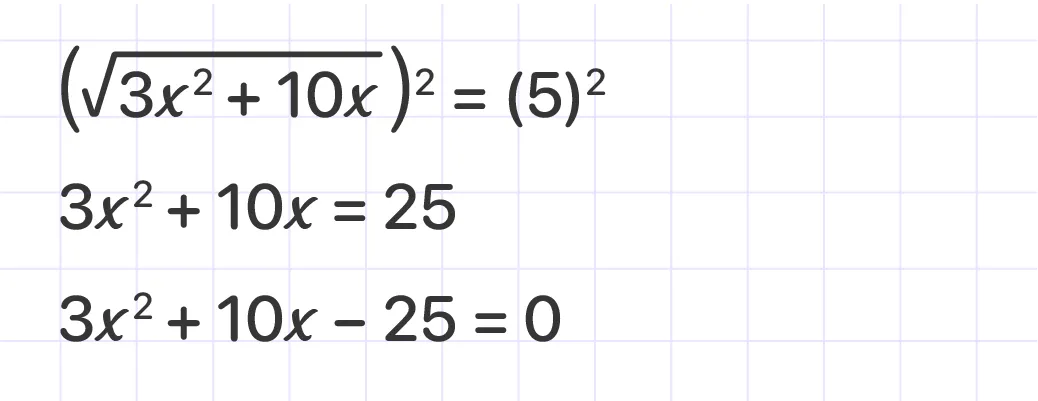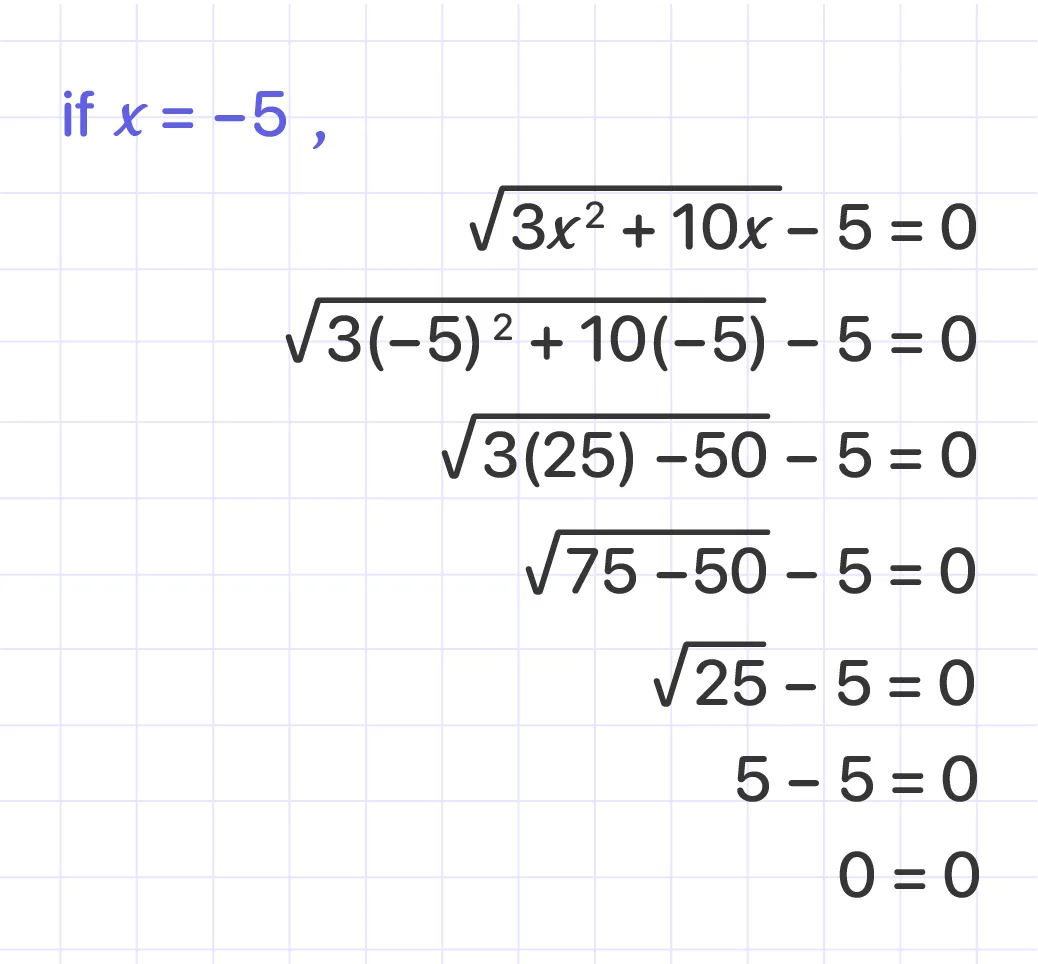MathMaster Blog
A radical equation is one in which one of the variables is under a radical.
To resolve a radical equation, do the following:
- Step 1: Isolate the radical expression involving the variable. If more than one radical expression involves the variable, then isolate one of them.
- Step 2: Raise both sides of the equation to the index of the radical.
- Step 3: If there is still a radical equation, repeat steps 1 and 2; otherwise, solve the resulting equation.
- Step 4: Check the answer in the original equation.
Example:
Solve $\sqrt{3x^2 + 10x} - 5 = 0$.
Solution:
Step1:
Isolate the radical part
$\sqrt{3x^2 + 10x} = 5$
Step2:
Raise both sides to the index of the radical and square both sides.

Step3:
Apply the quadratic formula:

Step4:
Check the result:

Then, we need to check the result for x = -5, so here’s what we get:

Answer: $x = -5 or x = \frac{5}{3}$.